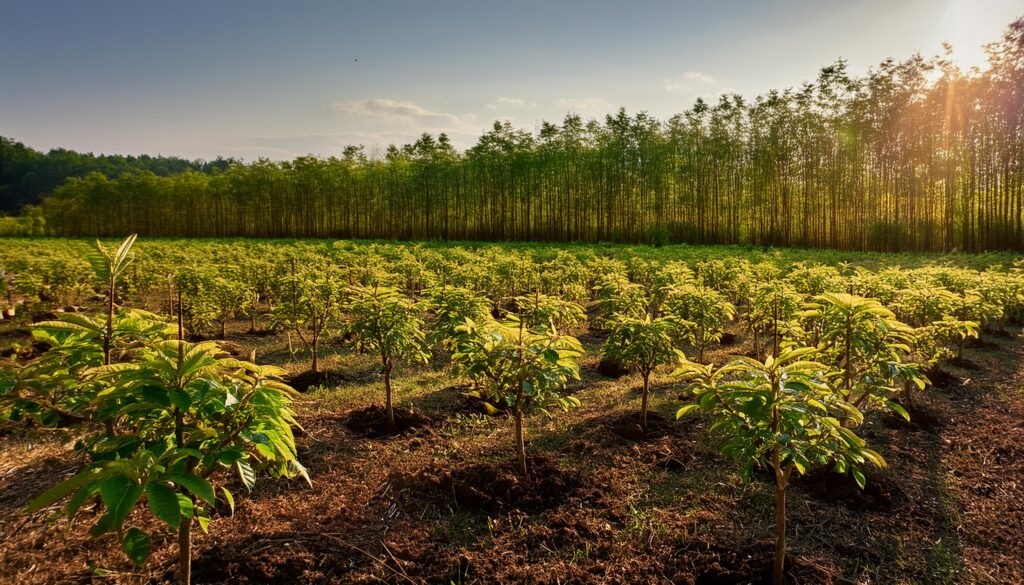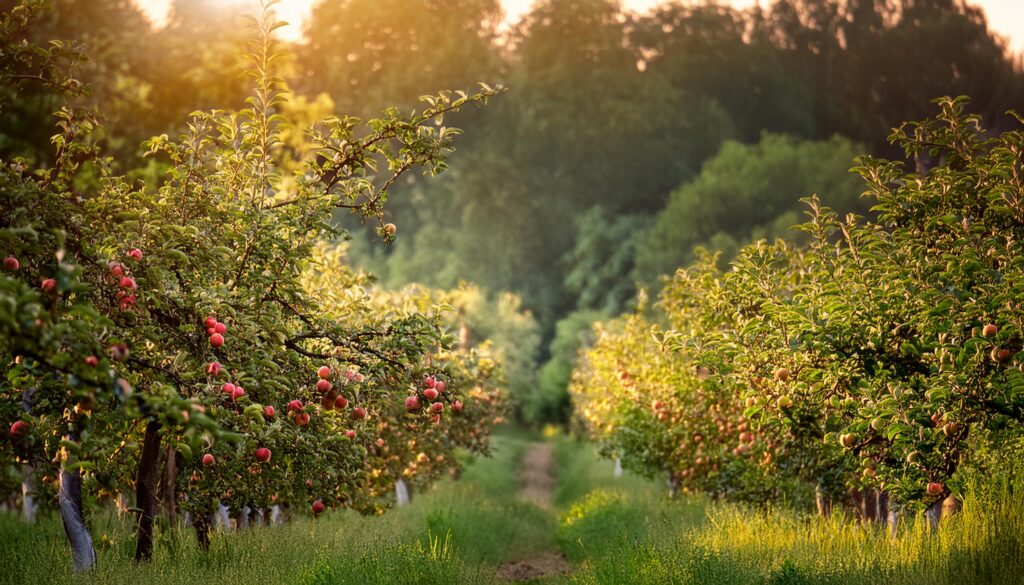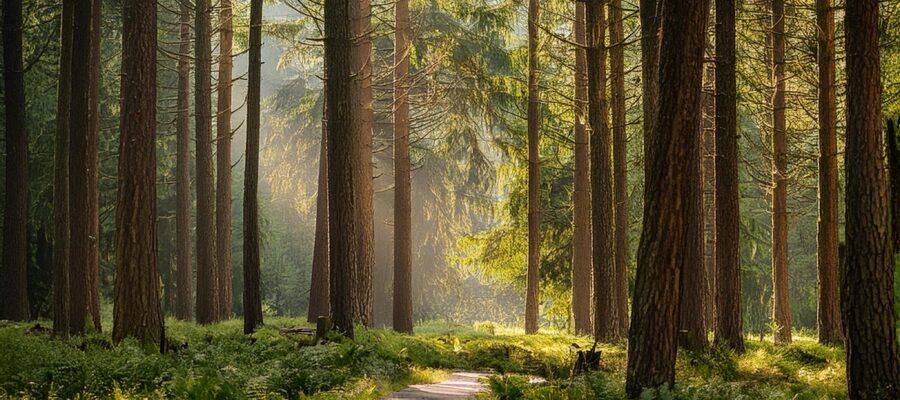Miyawaki forests, named after the Japanese botanist Dr. Akira Miyawaki, are a method of afforestation that involves planting dense, native forests. These forests grow rapidly and develop a diverse ecosystem that supports various plant and animal species. Miyawaki forests have gained recognition as a potential solution to urban heat and climate change. These forests can sequester carbon, improve air quality, and enhance urban biodiversity.
Types of Miyawaki Forests
Miyawaki forests can be categorized based on their purpose and the types of trees planted. All these types of forests may help in countering global warming. They help to save soil. Here are the different types of Miyawaki forests and the kinds of trees commonly grown in them:
1. Traditional Miyawaki Forests
These forests aim to restore native vegetation by planting a diverse mix of indigenous tree species. The goal is to recreate the original ecosystem as closely as possible.
Tree Types

Primary Species: Slow-growing, long-lived trees such as oaks (Quercus spp.), pines (Pinus spp.), and beech (Fagus spp.).
Secondary Species: Faster-growing trees that provide initial coverage and support for the growth of primary species, such as birch (Betula spp.), alder (Alnus spp.), and cherry (Prunus spp.).
Shrubs and Ground Cover: Understory plants like elderberry (*Sambucus spp.*) and dogwood (*Cornus spp.*) provide habitat and food for wildlife.
2. Fruit Miyawaki Forests
These are specialized Miyawaki forests that include a variety of fruit-bearing trees. They not only contribute to biodiversity but also provide food resources.
Tree Types
Fruit Trees: Mango (Mangifera indica), guava (Psidium guajava), citrus trees (Citrus spp.), pomegranate (Punica granatum), and fig (Ficus carica).
Supporting Species: Trees and plants that help improve soil fertility and provide shade, such as nitrogen-fixing species like acacia (Acacia spp.).
3. Ayurvedic and Herbal Miyawaki Forests
These forests focus on planting trees and plants known for their medicinal properties, as recognized in Ayurvedic medicine.
Tree Types
Medicinal Trees: Neem (Azadirachta indica), Tulsi (Holy Basil, Ocimum tenuiflorum), Ashwagandha (Withania somnifera), and Amla (Phyllanthus emblica).
Herbs and Shrubs: Turmeric (Curcuma longa), ginger (Zingiber officinale), and Shatavari (Asparagus racemosus).
4. Urban Miyawaki Forests
Specifically designed for urban areas, these forests aim to improve air quality, reduce heat, and provide recreational spaces.
Tree Types
Urban-friendly Trees: Trees that are tolerant of urban pollution and compact spaces, such as certain varieties of maple (Acer spp.), elm (Ulmus spp.), and cherry blossoms (Prunus spp.).
Decorative and Functional Plants: Ornamental trees and shrubs that also provide ecological benefits, such as Bougainvillea and Ficus species.
5. Coastal Miyawaki Forests
Designed for coastal areas, these forests help in soil stabilization and protect the coastline from erosion.
Tree Types
Coastal Species: Coconut (Cocos nucifera), mangroves (Rhizophora spp., Avicennia spp.), and sea almond (Terminalia catappa).
Salt-tolerant Plants: Beach morning glory (Ipomoea pes-caprae), and other halophytes.
Each type of Miyawaki forest is tailored to specific environmental, ecological, and community needs, using a variety of trees and plants that best suit the local conditions. These forests are designed to grow rapidly, become self-sustaining, and provide a myriad of ecological benefits, including improving biodiversity, mitigating urban heat, and offering medicinal resources.
Planning and Care for Miyawaki Forests

Planning
The planning phase involves selecting appropriate species, preparing the land, and ensuring a suitable mix of plant types. The key steps include:
Site Selection and Soil Preparation: Choose a location with appropriate sunlight and soil conditions. The soil is often enriched with organic compost to support plant growth.
Species Selection: Select native species that are well-adapted to the local climate and soil.
The selection typically includes a variety of trees, shrubs, and ground cover to ensure a multi-layered forest structure.
Planting Density: Plants are spaced closely, typically 3-5 plants per square meter, to promote competition and rapid growth.
Care and Maintenance
Watering: In the initial stages, regular watering is crucial to help young plants establish. Once the forest is mature, it requires minimal watering.
Weeding and Mulching: To protect the young plants from competing weeds and to retain soil moisture, regular weeding and mulching are necessary.
Monitoring Growth: Regular monitoring helps in identifying any issues like pests or diseases early on. As the forest matures, it becomes self-sustaining and requires minimal intervention.
More About Miyawaki Forests
Watch this eye-opener video about Miyawaki forests and the solutions they offer for countering global warming, and climate change and preserving biodiversity. They also promote volunteering, which is the need of the day for humanity to prosper.
Innovations in Miyawaki Forests
Fruit Miyawaki Forests
These forests integrate fruit trees such as mango, guava, and citrus, alongside traditional tree species. They provide food resources and attract pollinators, enhancing urban biodiversity. The fruit can be harvested and distributed within the community, promoting local engagement and sustainability.

Ayurvedic and Herbal Miyawaki Forests
By planting medicinal plants such as Tulsi (Holy Basil), Neem, and Ashwagandha, these forests serve dual purposes. They preserve medicinal plant species and provide resources for traditional medicine practices. This type of forest supports public health by offering natural remedies and promoting wellness.
Volunteering may be a great way to plant Miyawaki Forests. Learn more about Volunteering:
Volunteering Benefits: Why Should You Take Part in Community Service?
Conclusion
Miyawaki forests offer a holistic approach to addressing urban heat and climate change. They provide numerous ecological benefits, including carbon sequestration, biodiversity enhancement, and air quality improvement.
By creating a dense, multi-layered forest in a small area, Miyawaki forests can rapidly transform urban landscapes, making cities more resilient to climate change. Innovations like fruit and Ayurvedic Miyawaki forests add economic and medicinal value, further enhancing their appeal. With proper planning, care, and community involvement, these forests can become a cornerstone of sustainable urban development, contributing to a healthier and more vibrant urban environment.
Disclaimer: While Miyawaki forests are highly beneficial, they require careful planning and appropriate species selection to thrive in specific urban settings. Consulting with local experts and adhering to regional ecological guidelines is recommended for optimal results.
